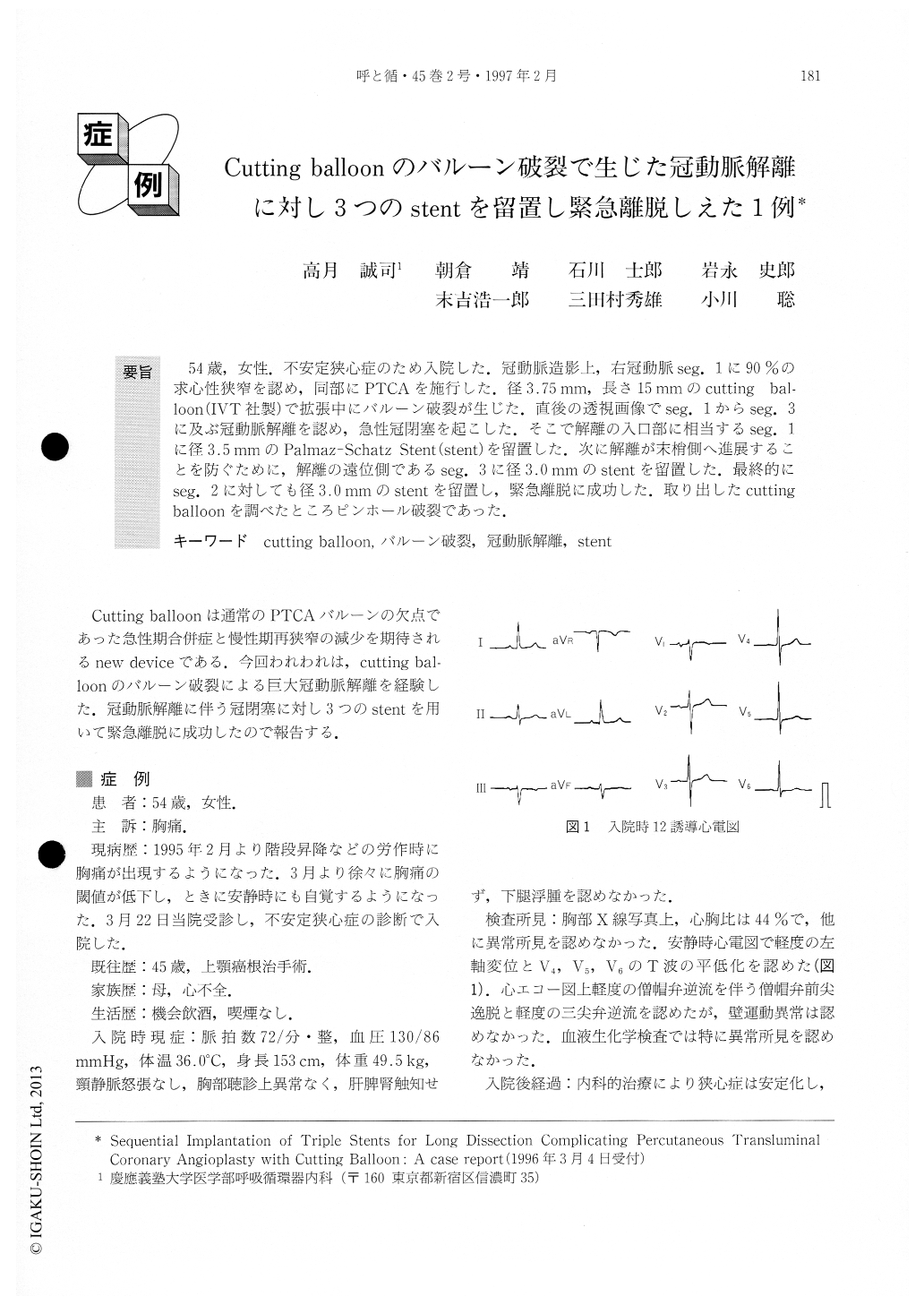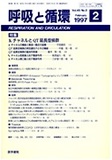Japanese
English
- 有料閲覧
- Abstract 文献概要
- 1ページ目 Look Inside
54歳,女性.不安定狭心症のため入院した.冠動脈造影上,右冠動脈seg.1に90%の求心性狭窄を認め,同部にPTCAを施行した.径3.75 mm,長さ15 mmのcutting bal—loon(IVT社製)で拡張中にバルーン破裂が生じた.直後の透視画像でseg.1からseg.3に及ぶ冠動脈解離を認め,急性冠閉塞を起こした.そこで解離の入口部に相当するseg.1に径3.5 mmのPalmaz-Schatz Stent(stent)を留置した.次に解離が末梢側へ進展することを防ぐために,解離の遠位側であるseg.3に径3.0 mmのstentを留置した.最終的にseg.2に対しても径3.0 mmのstentを留置し,緊急離脱に成功した.取り出したcutting balloonを調べたところピンホール破裂であった.
A 54-year-old female was admitted to our hospital because of unstable angina pectoris. There was a discrete and concentric 90% stenotic lesion at proximal RCA on coronary angiogram. PTCA was carried out or the lesion by means of a cutting balloon (Barath, IVT co'ltd) 3.75 mm in diameter, and 15 mm long. During the first inflation, the balloon ruptured and the pressure of the indeflator decreased suddenly. Then the large dissection from proxymal to the distal segment of RCA was shown in the X-ray image and followed by acute occlusion. The first Palmaz-Schatz stent was implanted towards the entry of the dissection, but the long dissec-tion could not be tacked up by only one stent and perfusion of the distal RCA was decreased. Then the second stent was implanted towards the distal end of the dissection, in order to prevent the distal progression of the dissection. The last stent was implanted in the mid -portion of the dissection, and post-dilation was perfor-med after each stent implantation. Finally, successful emergercy alleviation was obtained. There was no occurrence of subacute stent thrombosis. After the procedure, the cutting balloon was examined and a pin -hole rupture was found.

Copyright © 1997, Igaku-Shoin Ltd. All rights reserved.


